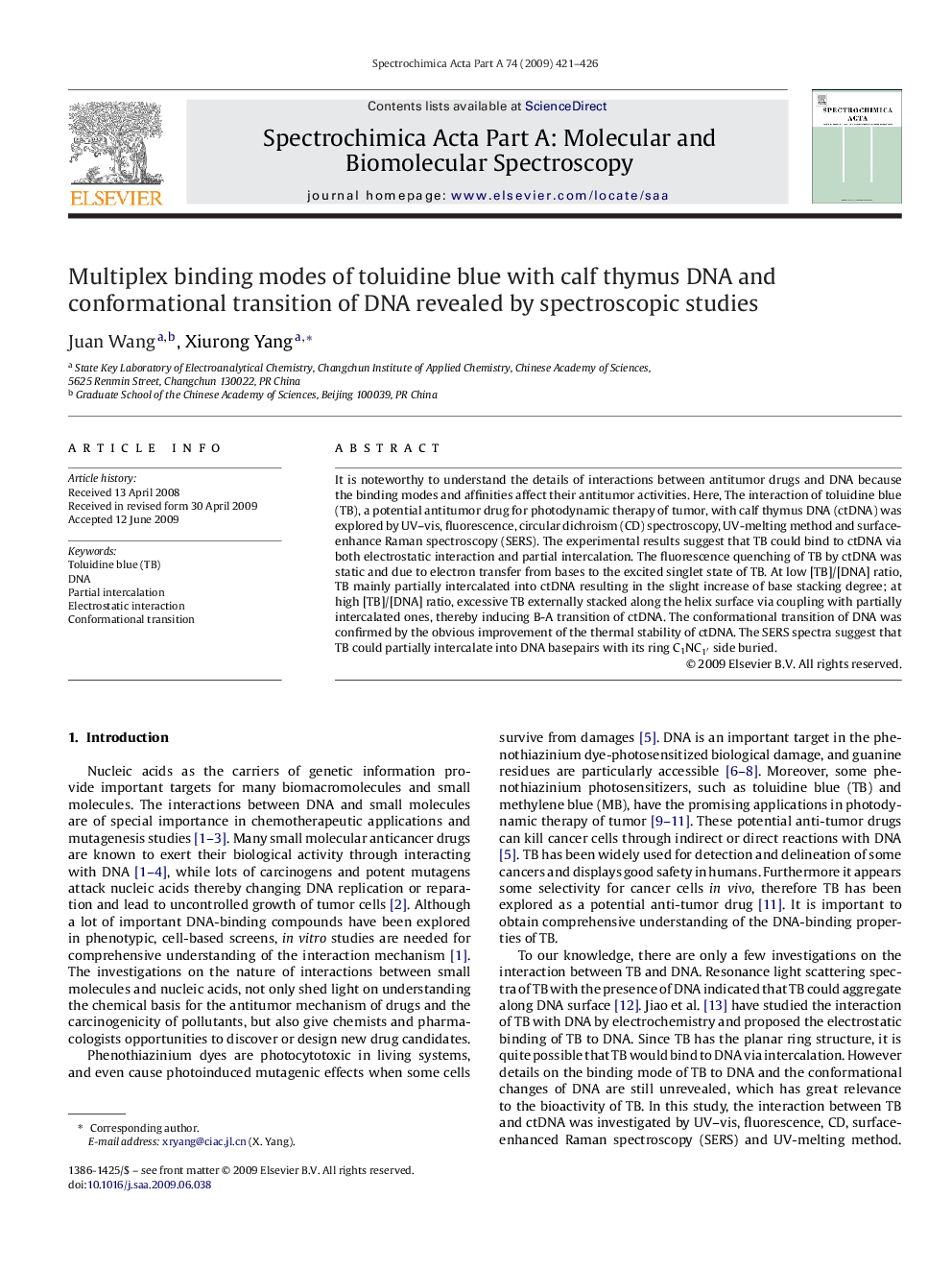| Article ID | Journal | Published Year | Pages | File Type |
|---|---|---|---|---|
| 1234808 | Spectrochimica Acta Part A: Molecular and Biomolecular Spectroscopy | 2009 | 6 Pages |
It is noteworthy to understand the details of interactions between antitumor drugs and DNA because the binding modes and affinities affect their antitumor activities. Here, The interaction of toluidine blue (TB), a potential antitumor drug for photodynamic therapy of tumor, with calf thymus DNA (ctDNA) was explored by UV–vis, fluorescence, circular dichroism (CD) spectroscopy, UV-melting method and surface-enhance Raman spectroscopy (SERS). The experimental results suggest that TB could bind to ctDNA via both electrostatic interaction and partial intercalation. The fluorescence quenching of TB by ctDNA was static and due to electron transfer from bases to the excited singlet state of TB. At low [TB]/[DNA] ratio, TB mainly partially intercalated into ctDNA resulting in the slight increase of base stacking degree; at high [TB]/[DNA] ratio, excessive TB externally stacked along the helix surface via coupling with partially intercalated ones, thereby inducing B-A transition of ctDNA. The conformational transition of DNA was confirmed by the obvious improvement of the thermal stability of ctDNA. The SERS spectra suggest that TB could partially intercalate into DNA basepairs with its ring C1NC1′ side buried.
